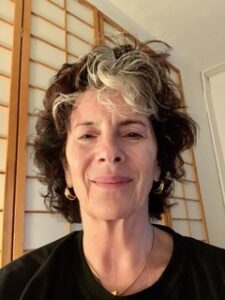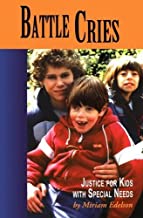
I learned about fascism at my father’s knee. He explained to me that he was not a pacifist because some forces in the world had to be fought. Fascism was one such force and he enlisted in World War II because of it. He was subsequently wounded on a beach in France, earning a Purple Heart medal from the U.S. Army. My father was not a man who glorified his memories of the War. But he did teach us that like the swastika, the ‘goose step’ march of the Nazis was one to disdain.
The alt-right frightens me, as a Jew and as a woman. According to the Southern Poverty Law Centre, the alt-right is a set of far-right ideologies, groups, and individuals whose core belief is that ‘white’ identity is under attack by multicultural forces using ‘political correctness’ and ‘social justice’ to undermine white people and their civilization.
This fear runs deep, disturbs me to the core. White supremacy and the alt-right are dangerous ideologies and their impact is growing. The views and actions they espouse are reminiscent of Nazi Germany, an unsafe place for Jews, women, homosexuals, disabled persons and the Roma. Anyone thought to be different was victimized.
While I do not walk down the street in fear, they are not far away. It is not just an American or European phenomenon. The alt-right is present here in Canada – and not only on social media. There are 6,660 right-wing extremist channels, pages, groups and accounts across seven social media platforms operating in this country. They use the internet to construct collective identities that are reinforced and mirrored by others of like mind. There’s been an increasing number of hate crimes in Canada, linked to far-right ideologies that demonize Muslims and Jews, as well as immigrants, Indigenous people, women, LGBTQ communities and other minority groups. The alt-right fascist ideology intensifies misogyny, sexism and racism via the intersection of social identities such as race, gender, class, religion, nationality and sexuality.
In examining the strength of the alt-right, it is instructive to note the fact that many started out as a men’s rights activists. Some were prodigious bloggers. The linkages between misogyny and the alt-right are worth exploring and interestingly, the Southern Poverty Law Centre labels men’s right activists as hate groups.
Men’s rights activists say that men are suffering and it is women’s fault. Men as a group are subjugated and women should be punished. The incel movement is characterized by men’s insecurity, sexually and otherwise. They are anti-feminist. The word incel is short for “involuntarily celibate,” a term used by those who feel they’ve been cheated out of their confidence and masculinity by women who have refused to have sex with them.
It is, perhaps, important to recognize this vulnerability — to have empathy for these men. But that only goes so far, in my opinion. It may explain their extreme hatred of women, but it does not excuse it. And there are other significant linkages.
Extreme misogyny and white supremacy aren’t just analogous, they’re entangled. Both see increased demands for equality, whether it’s Black Lives Matter or the #MeToo movement, as coming at the deadly expense of the privileged group — white people or men, respectively.
Other parts of the alt-right focus on this related issue of white supremacy. One leader says “diversity is the code word for white genocide”. Other leadership figures chime in that they need an ethno-state. They mean white people only. And one of Canada’s own alt-right leaders, Lauren Southern, claims that “non-whites should assimilate or go home”.
Men’s right activists speak of taking the “red pill”, awakening to the “truth” that the power structure is, in fact, flipped on its head, and that it’s not women who are the victims of sexism, but men, who they think face unjust family courts and false rape accusations.
The idea that women are the ones who face discrimination and disenfranchisement is, in their minds, the greatest deception of all, concocted in order to create a protected class for women to elevate their social status and shield them from criticism or repercussion.
The election of Donald Trump to the presidency in 2016 and the resurgence of white nationalist organizing brought the white supremacy of the alt-right to the fore around the world, including Canada, but misogynist extremism has endured at the movement’s core. And the ideology of incels, men’s rights and the red pill advertises itself as the rejection of dominant culture. But violent misogynist extremism can’t be addressed without first dealing with the misogyny in our dominant culture that feeds that ideology.
Just before Alek Minassian rammed his vehicle in an attack that occurred on April 23, 2018, along Yonge Street through the North York City Centre business district in Toronto, Ontario, Canada, he released a manifesto praising another misogynist killer. The driver targeted pedestrians, plowing down innocent people in his path, killing 10 and injuring 16, some critically. The attack is characterized as revenge for perceived sexual and social rejection. He was rebelling against what he saw as the domination of women. Eight of the ten deceased victims were women. This act, and others like it, are like snapshots into the motivation of the alt-right. It is a scary business. Why does it make me so antsy?
A recent brush with anti-Semitism comes to mind. One night in Argentina, my partner and I were having dinner with our host family and some of their friends. In the context of a wide-ranging conversation touching on the cost of making real estate deals in different countries, another dinner guest says in Spanish, “You know, it takes two Dutchmen to make a Jew.” We must have looked surprised and rather dismayed, not quite believing the remark had been made. Without skipping a beat our host, a distinguished retired university professor, repeats the comment in English, to ensure that we fully catch the meaning. We are appalled. Struggling to converse in our intermediate level Spanish, neither of us says anything. The moment quickly passes, conversation skips to some other topic. No notice is made of the blatantly anti-Semitic remark. Nor of our host’s odd snap decision to reinforce it.
After dinner we retire to our bedroom, right across the hallway from our hosts’. In hushed tones, unsettled and still in shock, we search for more solid ground. Do we tell them that the remark has made us uncomfortable, that it reflects a view of Jews and money that is stereotypical and unacceptable?
In this spectacularly beautiful and remote corner of northern Patagonia, how do we account for the ugly stain the remark has made? Do we report this otherwise charming, refined gentleman to the language school where we are studying? What is to be gained from calling out our hosts and possibly losing the roof over our heads? What is lost by not speaking out?
I experience a strange sensation. I feel unsafe. With a full-on imagination spurred by World War II movies, I picture our host in an SS uniform, complete with jackboots and strutting behaviour. After all, Argentina was a prime destination for thousands of Nazi war criminals and other fascists as the war came to a close. I recognize the exaggerated nature of my thoughts and resolve to keep them at bay. They are not helpful. I did not speak up in that situation, and wish now that I had. I believe that not speaking out only reinforced the original negative message.
In a related vein, the expression of male rage during the January 6, 2021 siege of the U.S. Capitol building, evoked strong feelings. Like many, I felt a kind of bodily fear watching the protesters. In a conversation with my psychotherapist we identified that extreme male rage as a feature of my childhood. In reaction to it I had learned to be vigilant. To walk on eggshells around my father who could storm about, to want not to provoke that out-of-control behaviour.
The protesters at the Capitol building were also motivated by rage, some taking up space that was not theirs to take, like the goon who splayed his legs out over House Speaker Nancy Pelosi’s desk. And so, I begin to understand my reaction to the alt-right as something carved deep in my core. The actions of the white supremacists trigger my fear and desire to protect myself from violent expressions of anger.
Perhaps this is the missing nugget of truth that impels me to act against the alt-right.
It is not just that white supremacy makes my skin crawl. It does and we also have to come together to combat it by working with labour, groups in civil society and youth to make the alt-right less attractive to people who feel disenfranchised. A new collective politics must be forged if we are to dismantle unequal power relations and domination and effectively thwart the far right from gaining further ground. I don’t know all the elements of this politics, but am convinced that the first step is naming the insidious ideology wherever it appears. It is with this in mind that I will not be silenced again.

Miriam, an extraordinary article so well crafted and speaking so directly to the fear we (men and women) all carry with this dystopic reality. On the other hand, I am curious about how these threads filter into marriage/romantic relationships. There are moments when I have encountered what seems like a tendency toward “male-bashing”, and even more so in how boys are raised, plenty of books on that subject. I conjecture that the alt-right syoginay has deep roots that need to be “uprooted” to help correct these wrongs.